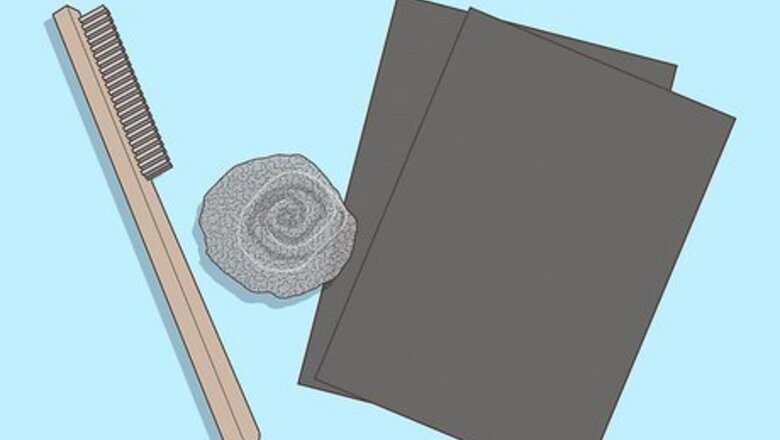
views
Cleaning Light Rust

Gather steel wool, sandpaper, a wire brush, or a crumpled ball of tinfoil. These easy-to-find items can brush away small rust stains with ease. There's no reason to attempt more involved methods for lighter areas of rust when you can rub them away with common household items.

Put your back into it! Vigorously scrub your tinware with one of these items using a back and forth motion. You need to put a decent amount of pressure on the tin to effectively clear away the rust.
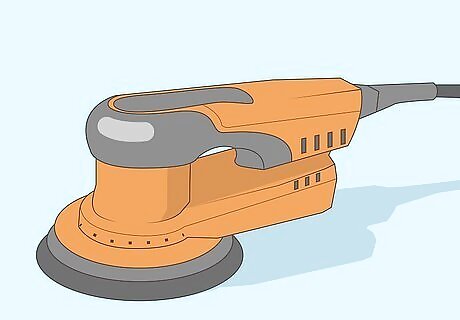
Use an electric sander for larger pieces of tinware. A grinder outfitted with a grinding wheel, stripping or flap disc can easily remove larger areas of rust. There are important factors to consider before using an electric sander. Sanders, flap discs and fiber discs work best on long, flat patches of rust. In contrast, wire wheels are suggested for corners and curved areas. Make sure the grinder is constantly moving so it doesn't puncture or wear away the tin. Consider using a mouse detail sander for smaller areas. Always begin with the coarsest grain and carefully move to smaller grains as the rust wears away. If there is significant scratching left on the tinware try using a fine grain sandpaper to smooth out any of the remaining marks.
Working with Acidic Liquids
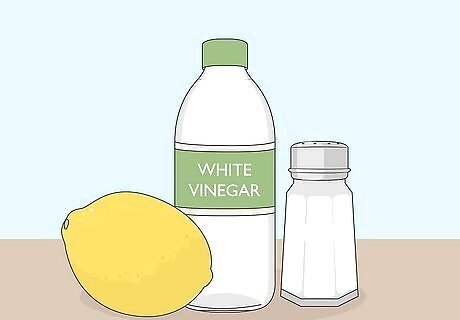
Find white vinegar or lemon and salt. Either of these materials work well for removing rust as their acidic properties help to dissolve the stain. White vinegar (acetic acid) and lemon juice (citric acid) are both weak acids, which loosen the iron oxide (rust).
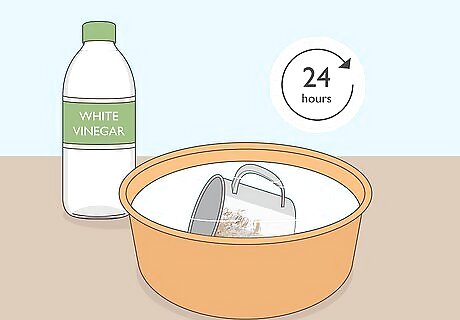
Soak the tinware in white vinegar. Find a plastic container deep enough to ensure your tinware can fit. Cover the tinware in white vinegar for roughly 24 hours until the rust has dissolved. Be sure to use enough white vinegar to submerge the tinware. If you don't have enough white vinegar to cover the entirety of the object, you can soak a clean cloth in vinegar and wipe the tin. Scrub the rust off of the tinware using a rough sponge or aluminum foil, The longer you soak your tinware, the easier it will be to scrub the rust off. It's still effective to submerge the object in vinegar for a few hours, but prepared for putting some extra work to remove the rust.
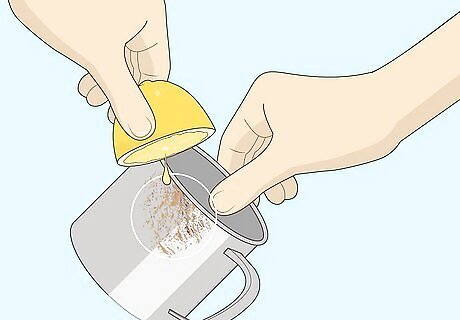
Pour lemon juice onto the rust. Initially, only start with about a tablespoon of lemon juice. You may have to use more lemon juice for larger areas of rust, but start small first so you're not over-saturating the area with citric acid. Apply the lemon juice first so the salt will stick. Make sure to have lemon juice leftover to reapply after you pour the salt. Add the salt. Start with roughly half of a teaspoon of coarse salt (or table salt will do the trick) and apply it to the rust stain. Make sure the salt is sticking and that you used enough to thoroughly coat the rust stain. Reapply the lemon juice. Add the same amount of lemon juice you used initially and pour it onto salt. The lemon's natural acidity makes it a great candidate for dissolving rust.

Wipe off the lemon juice or vinegar with a cloth. Make sure you use a clean cloth so no other contaminants get onto the stain. Thoroughly rinse the stain afterwards and scrub vigorously to remove any remaining rust.
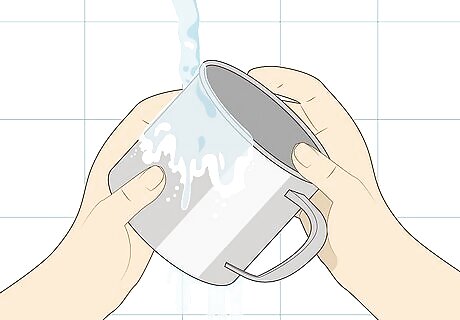
Wash the tinware. It's very important to clean the surface with water after the rust has dissolved. If any vinegar or lemon juice is left on the tinware the acidity could damage the metal.
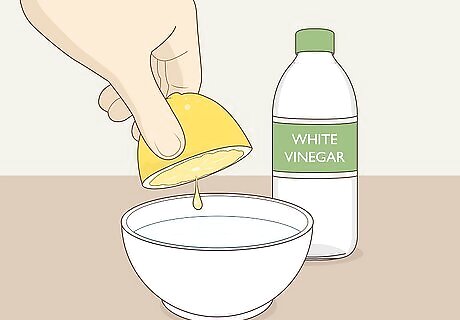
For extra tough rust, mix the lemon juice and vinegar. The acidity of both products work in tandem for a potent method of rust removal. The lingering lemon smell will leave your tinware with a fresh citrus scent.
Scrubbing with Baking Soda

Make a paste by mixing the baking soda with water. Make sure to use equal parts baking soda and water. Start by mixing 1 tablespoon of baking soda and 1 tablespoon of water with a spoon in a small bowl. Combine more if necessary. It's crucial to make sure the paste is thick enough to adhere to the rust.
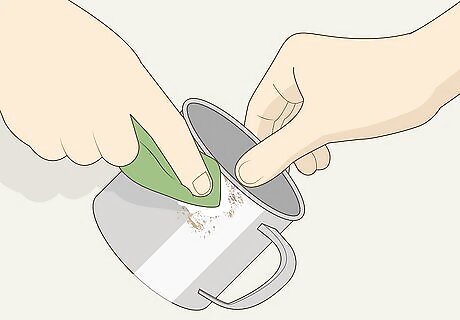
Apply the paste with a clean, wet rag. Using the rag, apply the paste and allow it stick to the rusted surface for at least an hour. Be sure to give the mixture enough time to set on the rust.

Scrub the baking soda off. Using steel wool, a wire brush, crumpled aluminum foil, or even a toothbrush, rigorously scrub the baking soda off of the tinware until there is none remaining. This process may need to be repeated a few times to get the entirety of the rust removed from the surface.
Removing Rust with the Potato Method

Cut a potato in half. Find a medium-sized potato and slice it in half. Coat the cut end with dish soap or environmentally friendly cleaning powder. The soap causes a chemical reaction that helps to remove the rust stain.
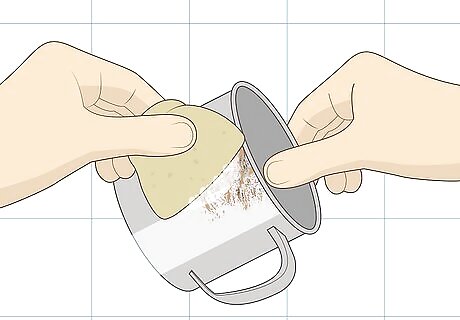
Rub the cut potato edge over the rust or stain. Work the stain vigorously with the cut potato edge until the rust has been removed. Remember you need to apply a significant amount of force in order to effectively scrub away the rust. If you need to reapply the potato, simply cut off the soapy edge and apply the dish soap to the new edge of the cut potato. A mixture of baking soda and water can be substituted for the dish soap if necessary. If the rust stain is small, you can simply leave the potato over the spot for a few hours.
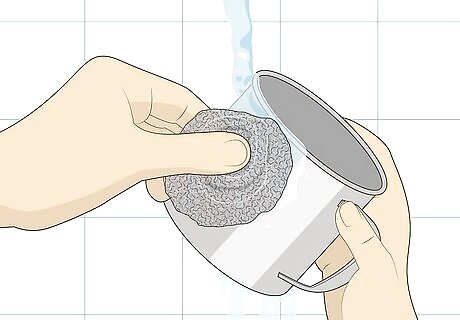
Remove the potato and thoroughly clean the rust stain. Use steel wool or a coarse cloth to make you have enough friction to remove the remaining stain. Give the tinware ample time to dry.
















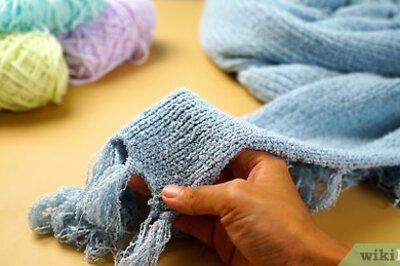

Comments
0 comment